SINGAPORE – The new year looks promising for those looking to buy a new car. More certificates of entitlement (COEs) will be available, fuelled by the cyclical upturn in supply as well as the Government’s commitment to bring forth more COEs from the peak supply years of 2026 to 2027.
The revised Vehicular Emissions Scheme will kick in, resulting in stricter emission standards and less generous rebates for “greener” cars. This is likely to raise the prices of many popular models by $10,000 or more, which is not all bad.
First, motor dealers selling such cars will have less margin to secure COEs with, resulting in another price dampener. Second, the attraction of full electric models will grow, as these will continue to qualify for the biggest, albeit somewhat diminished, tax rebates.
A widely expected global economic downturn will be felt here, which again should keep exuberant demand for COEs in check.
Fleet owners – which have been a major driver of stratospheric COE prices in 2022 and 2023 – will remain the dark horse in 2024.
Will regulations be introduced to crimp their unhindered and aggressive decade-long expansion? Will their financiers adopt a more cautious approach on the back of economic headwinds?
When COE prices head south, many of these companies will be holding on to substantially devalued cars, and so they may buy more cars to average downwards as well as to prop up COE prices. How they eventually behave will depend on answers to the first two questions.
On the flip side, softening COE prices may lead to more car owners extending the lifespan of their vehicles.
The opportunity cost of doing so is less punitive for those who had bought cars with tax rebates because their cars will qualify for far smaller scrap rebates when their COEs expire.
COE supply will shrink in tandem with the rise in COE revalidations (extensions).
But there are two reasons why revalidations are unlikely to reach their previous peak between 2015 and 2020.
One, there are significantly more high-mileage cars today, owing to an enormous fleet of for-hire cars (namely private-hire and car-share vehicles).
Such cars – which clock some three times the mileage of an average family car – are too worn to go for another 10 years without a major (and costly) overhaul.
Two, cars have become significantly more complex and, hence, foreseeably less robust, than 20 years ago. Such vehicles are expected to be more prone to costly repairs if they were to continue plying beyond 10 years.
All things considered, the outlook for car buyers will be brighter in 2024 than it was in 2023. And because of that, car companies are expected to launch more models, with an increased focus on electric models.
The number of Chinese electric vehicle (EV) brands available in Singapore will more than double in 2024. Pure combustion-engine cars will get rarer as 2030 approaches, the year that such cars will not be allowed to be registered for road use here. For those who are undecided, there will be various hybrids as usual.
Audi

The first new model to launch will be the beefy SQ8 e-tron, a 370kW tri-motor beast said to be an improvement of the e-tron S Sportback. The compact Q4 e-tron and its bigger sibling, the Q6 e-tron, are due in the first and second half of 2024, respectively.
The electric Q4 promises a range of up to 506km, with the choice of either a 52kWh or 77kWh battery. Power ranges from an entry-level 125kW to a mid-range 150kW with single rear-mounted motor to a 220kW twin-motor all-wheel drive.
Its Q6 stablemate offers up to 600km of range and will have second-generation digital Oled rear lights, which will eventually be able to “communicate with other road users by displaying information”, according to Audi.
BMW

The second-generation X2 and first electric iX1 crossovers will arrive in the first half of 2024, as will a beefier variant of the i5 saloon.
The sporty-looking X2 will be offered with the usual petrol drivetrains, while the iX1 – expected to qualify for Category A COE – will become BMW’s least expensive electric car when it launches.
The i5 M60 is a dual-motor all-wheel-drive luxury sedan which hits 100kmh in 3.8 seconds and has a top speed of 230kmh. In the second half of 2024, the new M5 will arrive.
Citroen

The e-C4 X – a coupe-crossover variant of the electric e-C4 – will debut. Besides a handsome profile, it promises a power output of 115kW and a range of 417km from its single motor.
Ford

The long-delayed Mustang is expected to arrive. It will be a petrol version with a 2.3-litre turbo putting out 315hp and 475Nm of torque.
The engine is paired with a 10-speed automatic transmission. This may well be the last combustion engine Mustang.
GAC Aion

The Aion Y Plus is a compact crossover which is slightly bigger than the BYD Atto 3 and equipped with a 64kWh battery.
When it is launched in the first half of 2024, it will be the fourth Chinese electric passenger car brand to be available here, after BYD, MG and Ora.
Honda
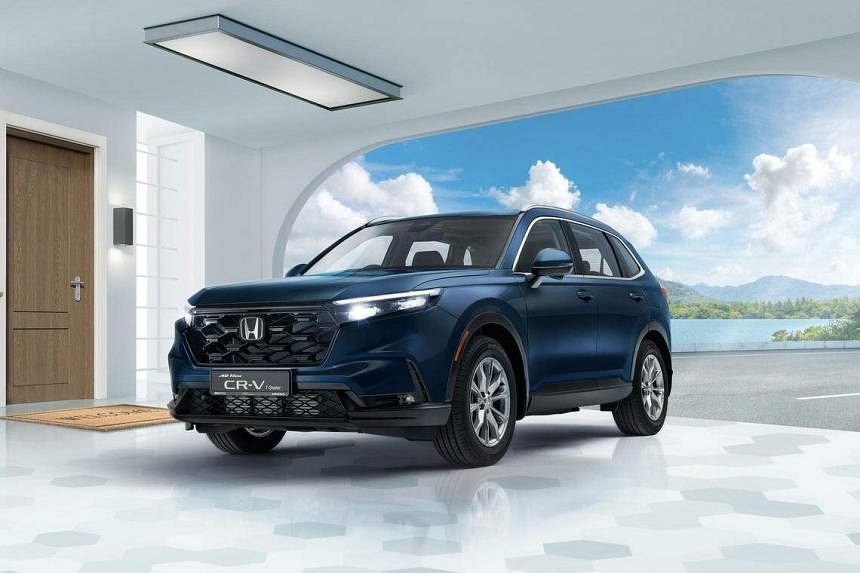
A new CR-V will arrive in January, equipped with a 1.5-litre turbocharged engine.
It will be followed by a new Accord Hybrid in the second half of 2024. The Accord will be a 2-litre with a hybrid system.
There is also talk of a new Odyssey.
Hyundai

A hybrid variant of the Avante has just arrived in January. Its 1.6-litre engine is paired with an electric motor powered by a lithium-ion battery. Hyundai says it can be driven in electric mode at up to 120kmh.
The cute and funky Kona EV is due too. The Singapore variant is expected to have a 64.8kWh battery promising a range of 505km.
For those looking for something bigger, there is a Category A variant of the Ioniq 6 electric fastback, with a 53kWh battery and single motor. This Ioniq 6 will be assembled in Singapore from the second half of 2024, but the Category A variant will first be imported from South Korea.
Finally, the steroidal Ioniq 5 N will debut, with broader flanks and two motors churning out 478kW. The electric hot hatch hits 100kmh in 3.4 seconds and has a top speed of 260kmh.
Kia

Facelifted models of the Sorento multi-seat sport utility vehicle (SUV) and massive Carnival multi-purpose vehicle (MPV) will launch in May and June, respectively. Expect hints of EV styling cues to make both look more modern and striking.
The star car in 2024 may well be the EV9 – Kia’s first electric multi-seater. Slated to land by year-end, the EV9 measures 5,010mm long, 1,980mm wide, 1,755mm tall and with a wheelbase of 3,100mm (285mm longer than the Kia Sorento). It has 571 litres of stowage with all the seats up and promises a range of 541km.
Lotus

An Emira powered by a 2-litre turbocharged inline-four engine from AMG and an eight-speed dual-clutch transmission is likely to be the most interesting sports car to land in 2024.
Maxus

The Mifa 7 is scheduled to launch in June. This electric multi-seater is slightly smaller than the enormous Mifa 9 and measures 4,910mm long, 2,201mm wide (including mirrors) and 1,756mm tall, with a wheelbase of 2,975mm.
Mazda

The new CX-80 seven-seat SUV could arrive by the end of 2024. Essentially an extended version of the CX-60 launched here in July 2023, it is likely to be powered by a 2.5-litre inline-four engine driving the rear wheels.
A mild-hybrid version of the longstanding CX-5 will also be available. Besides the electrical assistance, it is not expected to have any substantial changes. Meanwhile, a redesigned Mazda 6 saloon is widely speculated.
Mercedes-Benz

The new E-class will no doubt find a loyal following among businessmen and middle-management executives. As usual, a plug-in hybrid will be among the line-up, which should arrive in the first half of 2024.
On the opposite end of the spectrum is the Mercedes-AMG GT 63 Coupe, which is slated to land in the second half of the year. The sports model is powered by a 4-litre bi-turbo V8 engine producing 577hp and 800Nm of torque, allowing it to sprint to 100kmh in 3.2 seconds and on to a top speed of 312kmh.
And towards the end of 2024, the highly anticipated EQG – an electric version of the iconic G-wagen – should debut. It is said to offer up to 640km of range, and have motors at both axles to power the car through rough terrain.
In all, more than 10 new models and facelifts will be unveiled.
MG

The Cyberster electric roadster will arrive towards the end of 2024. With a motorised fabric roof and dramatic swan doors (also motorised), the two-seater is the first model to hark back to MG’s roots since the brand was acquired by Chinese automaker SAIC Motor in 2007.
It will be the first battery-powered roadster here since the first Lotus-based Tesla Roadster made a brief appearance in 2010.
If you are looking for something with more seats, consider the MG M9, which is an MG-badged version of a multi-seater launched by Maxus in 2023. Maxus is also owned by SAIC Motor.
Mini
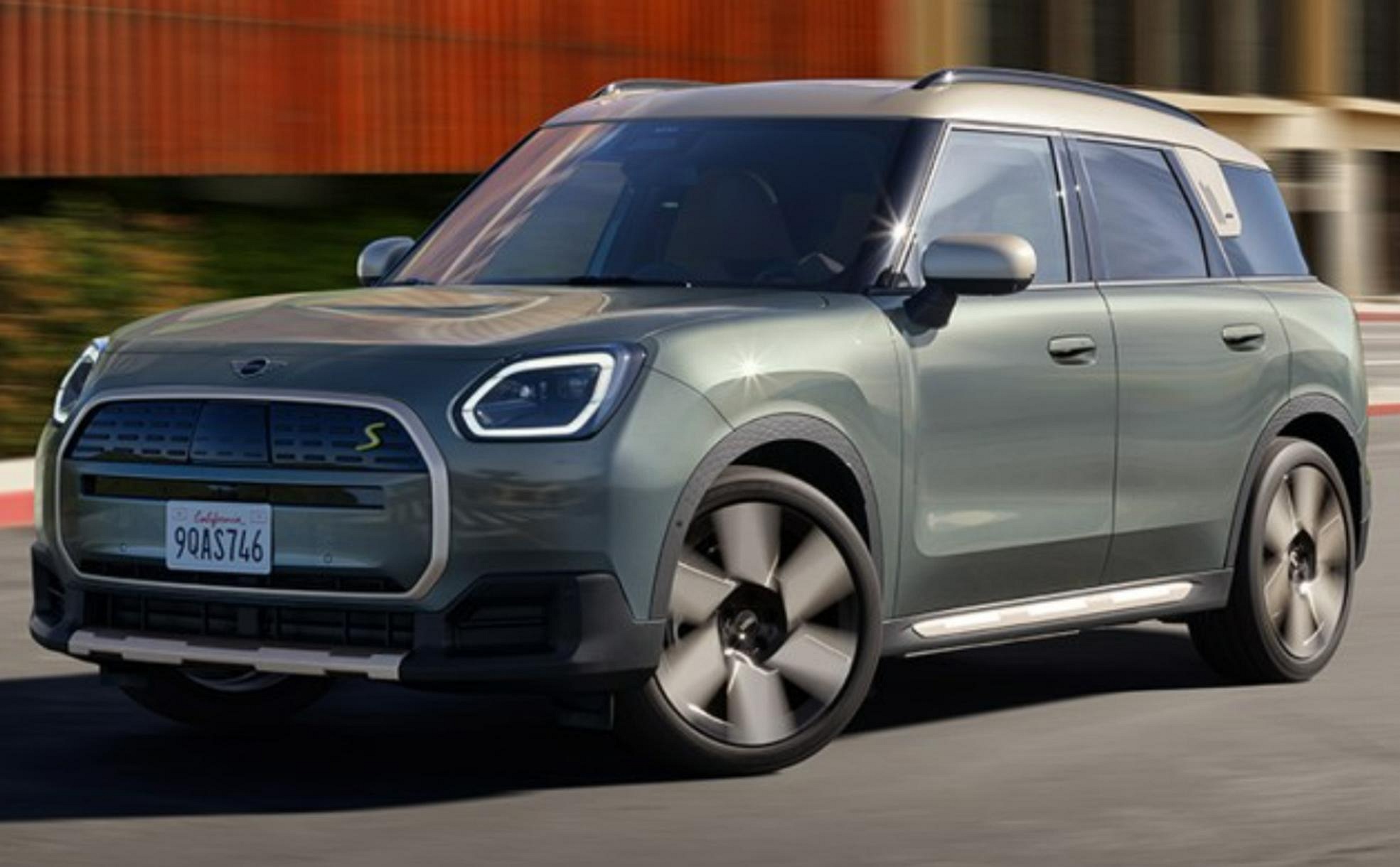
Two electric models will arrive. First, the Countryman E compact crossover, which is powered by a 150kW/250Nm motor. It hits 100kmh in 8.6 seconds and reaches a top speed of 170kmh. A 230kW/494Nm all-wheel-drive version does the century sprint in 5.6 seconds and reaches a top speed of 180kmh.
Then, there is the Cooper E hatch, which is also available in two variants. A 135kW/290Nm one reaches 100kmh in 7.3 seconds, while a 160kW/330Nm Cooper SE hits the century mark in 6.7 seconds.
Neta

Neta is an EV brand built by Shanghai-based Hozon New Energy Automobile.
In Singapore, the Aya (previously known simply as V) compact hatch will debut in the first half of 2024, followed soon by the X compact crossover.
Like GAC Aion, the brand is distributed by home-grown company Vincar EV.
Nissan

The new Note e-Power hybrid hatch will launch in the first quarter of 2024, to be followed by the new Serena e-Power hybrid MPV (in both seven- and eight-seat configurations) in the second quarter of the year.
Nissan’s e-Power cars are motor-driven, but their batteries are charged by a small petrol engine which acts solely as a power generator.
As early as the third quarter of 2024, the long-delayed fully electric Ariya crossover will finally arrive in showrooms.
Ora

The Ora 07 – previously known as the Ora Lightning Cat – is expected to arrive in the second quarter of 2024. This electric mid-sized sedan goes head to head with curvy electric saloons such as the Hyundai Ioniq 6 and the BYD Seal.
Peugeot

The new e-3008 and the facelifted e-2008 – both electric crossovers – will arrive in the later part of 2024.
Separately, the e-308 electric hatch and e-308SW electric wagon may also arrive.
Polestar

The electric Polestar 3 and 4 are expected in the second half of 2024. The 3 is a full-sized SUV sharing components with the Volvo EX90, while the 4 is a sporty-looking crossover without a rear windscreen and about the size of the Porsche Macan.
Porsche
The new electric Macan will make its global debut in Singapore in January.
The top-of-the-range version is expected to have around 600hp and 1,000Nm of instant torque. It will have super-fast charging capabilities and its cabin will be similar to what is seen in the electric Taycan. Expect retail sales to begin towards the end of 2024.
Renault
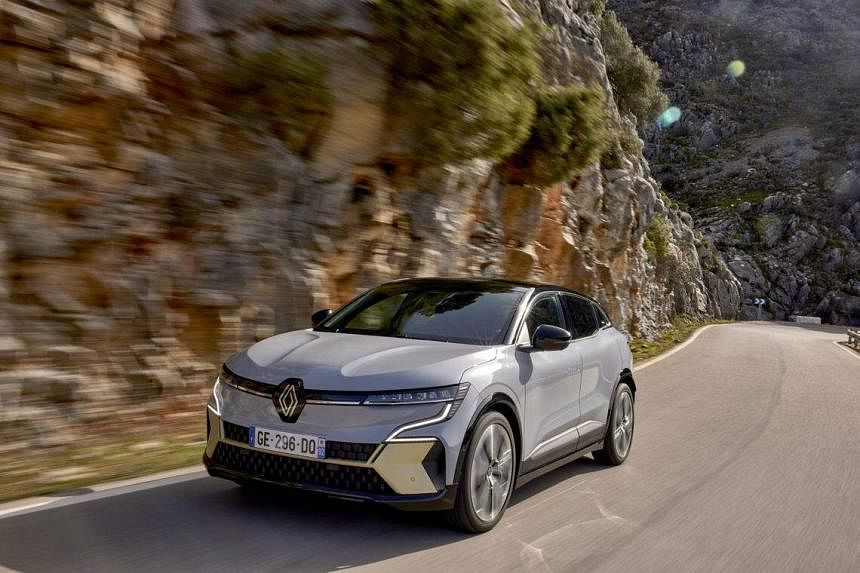
Launched internationally in 2022, the Megane E-Tech is a hip-looking electric five-door which kicks off Renault’s all-electric offensive.
It is powered by a 160kW motor, which takes it to 100kmh in 7.5 seconds. The French car promises a range of 448km and, with the appropriate charger, it can regain nearly 300km within half an hour.
Skoda
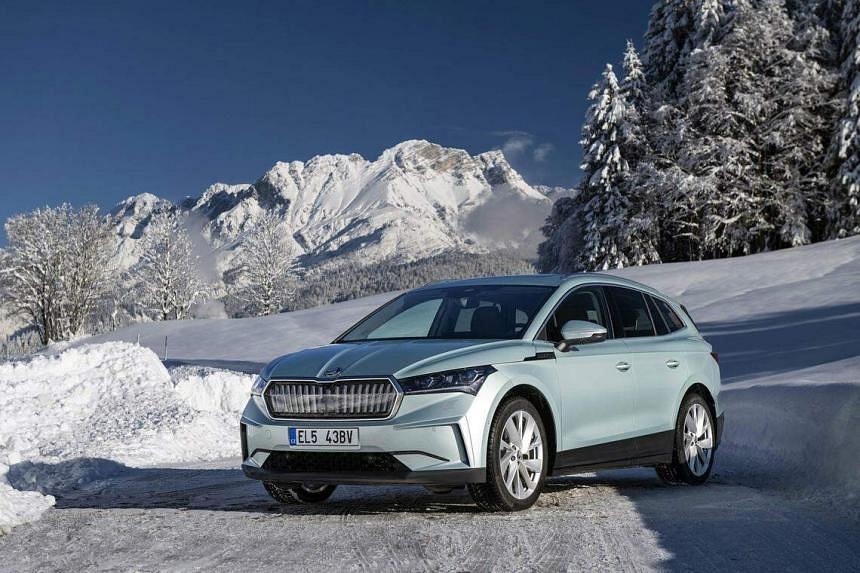
In the second quarter of 2024, the revised Enyaq, called the Enyaq 85, will be launched. This electric crossover will have a sportier-looking sibling called the Enyaq Coupe 85, which will also appear at the same time.
In the third quarter of the year, a facelifted Octavia will arrive, along with a new Kodiaq SUV with more space than its predecessor.
Finally, in the fourth quarter, the new fourth-generation Superb saloon will debut. Like the Octavia and Kodiaq, the Superb will still be a combustion-engine model.
Smart
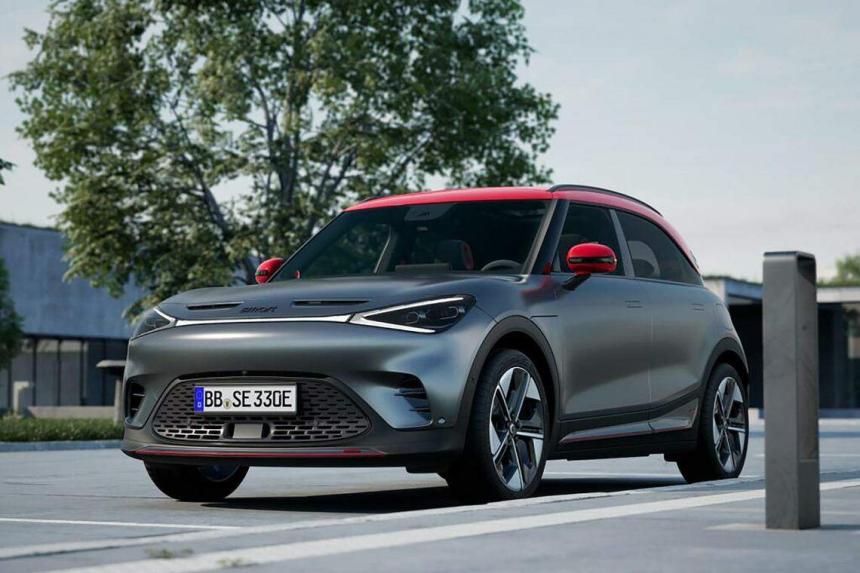
This compact EV brand co-owned by Mercedes-Benz and China’s Geely group will debut in the first half of 2024. The first model to go on sale is the Smart #1, a subcompact crossover sharing components with the Volvo EX30.
Suzuki

The fourth-generation Swift is set to arrive in the third quarter of 2024. It measures 3,860mm long, 1,695mm wide and 1,500mm tall, with a wheelbase of 2,450mm, with a dramatically redesigned front section.
The car is powered by a new 1.2-litre engine with a 12-volt mild-hybrid system.
There will also be a five-door Jimny, which was unveiled internationally in 2023. The irresistibly cute three-door Jimny has a cult following, but the five-door variant will appeal to families when it arrives in the second half of 2024.
Toyota/Lexus

First of all, the sleek fifth-generation Toyota Prius hybrid will be made available for retail sales. The benchmark petrol-electric model was reserved only for fleet buyers when it was launched here in 2023.
Those looking for more value for money might want to wait for the made-for-Asia Vios, which will return in the third quarter of 2024, this time as a hybrid.
At the Lexus stable, two models will launch in the first quarter of the year – the LBX subcompact crossover and the LM luxury four-seater minivan.
Volkswagen

After a long dry spell, Volkswagen will have a slew of new models, starting with the new Tiguan crossover in the first quarter of 2024. It has a sleek new design and one of the largest boots in its segment.
The second quarter of the year will see the arrival of the ID 4 Pro and ID 5 Pro – updated versions of the brand’s electric compact and mid-sized crossovers. They will be joined by their respective GTX variants, which are sportier.
In the same quarter, a facelifted T-Cross subcompact crossover will arrive, followed by facelifts of the Golf, Golf GTI and Golf R in the third quarter.
In the last quarter, the ID Buzz, ID Buzz Long Wheelbase and ID Buzz Cargo minivans will be ready for retail sales – about two years after the ID Buzz was shown at the 2022 Singapore Motorshow.
Volvo

The EX30 electric compact crossover – Volvo’s smallest model yet – will launch in January. The EX90 full-sized electric SUV is expected in the second half of 2024.
The EX90 shares a platform with the Polestar 3. Both cars were supposed to have launched in 2023, but were delayed because of software issues. Volvo and Polestar are owned by Chinese automotive group Geely.
Zeekr

Zeekr is a premium EV brand started by China’s Geely group in 2021. It is distributed by Premium Automobiles, which also represents Audi.
Two models will be launched together some time in the third quarter of 2024 – the massive 009 MPV and the X compact crossover.
The 009 is a 5.2m six-seater about the size of the Mifa 9, but is expected to be more luxuriously appointed. The X is about the size of the Nissan Qashqai and is also expected to be well-equipped.


